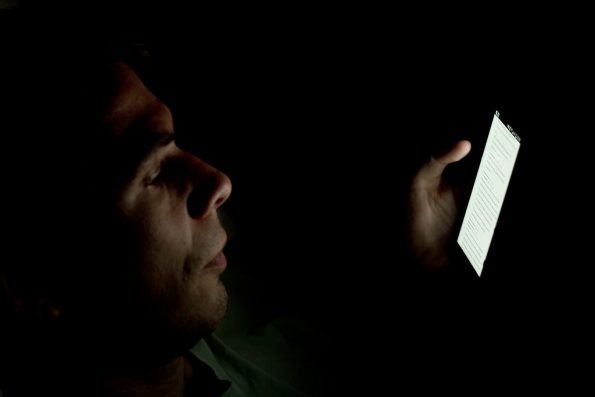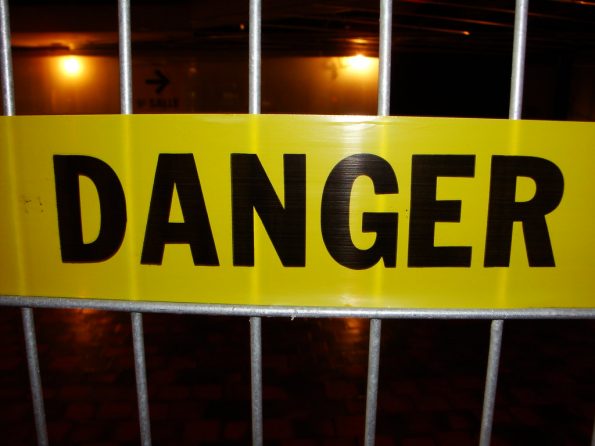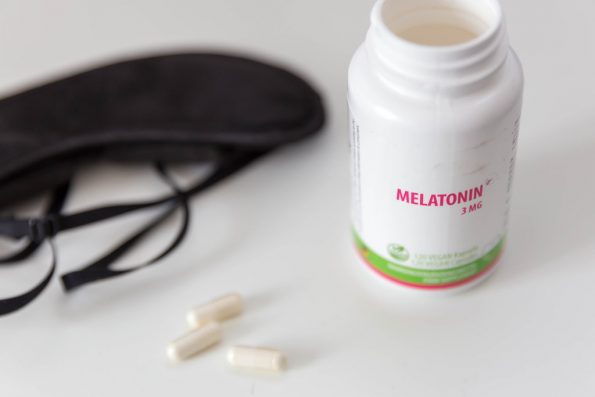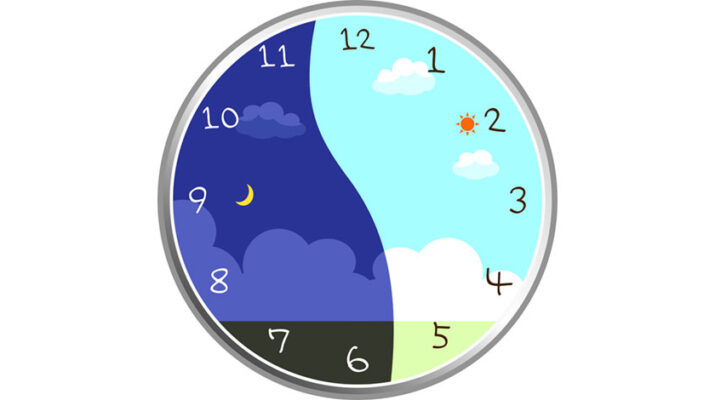Sleep and food are truly amongst the most basic of needs – in fact, they’re on the same level as breathing (and excretion!) on Maslow’s pyramid of needs. Even the CanMEDS framework of the Royal College states that as a Professional, physicians must be able to manage personal and professional demands to maintain a sustainable practice.
In 2011, 1.8 million Canadians (12% of the working population) were exposed to night shiftwork, with 45% of them being female. The highest prevalence by occupation was protective services (37%), healthcare workers (35%), and manufacturing (24%). When considering not just nightshifts, but all shiftworkers, numbers rise as high as 28% – over a quarter of the working population!
Clearly, a lot of people are doing shiftwork…..
The implications of shiftwork are enormous.
-
- ECONOMIC: On an economic level, there are additional costs associated with work-related accidents and injuries, insuring for these accidents and injuries, and retraining for new employees due to higher turnover rates.
- SOCIAL: On a social level, it’s quite simply difficult to be social when you work a lot of evenings and nights – shiftworkers are twice as likely to be divorced and much more likely to be engaged in substance misuse.
- HEALTH: And of course, the health risks involved with shiftwork are well-known, from everything metabolic (hypertension, diabetes, obesity, dyslipidemia) to increased risk of motor vehicle collisions, depression, and even infertility and immune dysfunction. In 2007, the International Agency for Research on Cancer classified shiftwork as a Group 2A carcinogen, placing it in the same class as lead, UV radiation, and insecticides. Consequently, in 2011, Cancer Care Ontario also acknowledged that shiftwork in Canadian industries is a probable cancer risk factor.
There is even evidence that shiftwork may be shrinking your brain!
Why is this particularly important to emergency physicians? A survey of more than 1,000 emergency physicians in the USA showed that:
-
- 58% felt night shiftwork negatively influenced job satisfaction
- 43% indicated that nightshifts had caused them to think about leaving emergency medicine
- Perhaps most alarmingly, among those who had left emergency medicine, 56% said that late evenings and nightshifts were a major factor in their decision to leave
Shiftwork is an integral part of emergency medicine and yet is simultaneously a huge reason for turnover. We must learn to effectively deal with shiftwork to not only survive, but to THRIVE.
SLEEP
First, let’s talk about how things get set up for a nightshift. We’ve all been there before. You’re about to start a string of three nightshifts. There’s a lot already going on with your life. You haven’t even started the first night, and you’re already exhausted. You’re laying in bed, and you want to sleep, but the only thought that keeps going through your mind is some variation of: “If I don’t sleep now, I’ll only get 3 hours of sleep.”
So what do you do?

Sleep Hygiene
Of course, you get out your phone. Bad move. You know this is a bad move because you’ve heard of sleep hygiene somewhere before, and this is pretty basic.
Michael Jordan didn’t become the greatest of all time by practicing insane windmill dunks or crazy half court 3-pointers. He became the best by sticking to the fundamentals.
Sleep hygiene is the most basic yet perhaps most often neglected aspect of effective sleep.
Let’s review. Sleep hygiene means:
- Making sure your bedroom is quiet, dark, and at a comfortable temperature
- Removing all electronic devices: No work in bed
- Avoiding large meals, caffeine, and alcohol before bedtime
- Getting regular exercise (but not too close to bedtime)
For sure, these are the fundamentals and a great place to start. But even under ideal sleep hygiene conditions, it’s not always easy to fall asleep.
How do people in the worst possible sleeping conditions do it?
The Skill of Sleep
The US Naval Pre-flight School has been training its pilots to sleep under terrible conditions since World War 2. They have highly effective program for getting their pilots to fall asleep in under 2 minutes. And that’s even with coffee and simulated machine gunfire in the background. Initially published in 1981, this technique became famous after going viral on a 2018 blog post. By the end of 6 weeks of practice, 96% of the pilots were consistently able to fall asleep in under 2 minutes.
Sleeping, much like everything else we do in medicine, is a skill.
If it can be practiced, it can be perfected.
The Dangers of the Night

A landmark study in Nature from 1997 showed how fatigue could cause just as much impairment as alcohol use. The study took 40 subjects and split them into two groups, where one was kept awake for 28 hours, and the other consumed alcohol at regular intervals until their blood alcohol concentration (BAC) was 0.1%. After 17 hours of sustained wakefulness, the results showed cognitive and psychomotor performance decreased to a level equivalent to the impairment observed at a BAC concentration of over 0.05%, which is the legal limit in many places throughout North America. Multiple other studies have replicated these findings.
A study from the University of Texas in 2016 was the first of its kind – it examined the impact of nightshift work on measures of drowsiness and driving performance while operating an actual motor vehicle on a closed track. Of the 16 post-sleep drives, there were zero near-crashes or early drive terminations. Of the 16 post-nightshift drives, 7 of 16 were terminated early for safety reasons. The authors concluded what we all intuitively know, which is that night shiftwork increases driver drowsiness, degrades driving performance and increases the risk of near-crash events.
And this risk is not theoretical. A cross-sectional study from 2021 of 273 residents in British Columbia doing shiftwork found that 54% of residents reported at least one motor vehicle collision (MVC) in the previous year. Furthermore, every additional 10km of travel time equated to an adjusted odds ratio of 1.54 increased risk of MVC on the way home.
Fight the Night with Bright Light

If shiftwork is unavoidable, and shiftwork is dangerous – what can we do about it?
A 2017 RCT used bright light therapy to see if it could help improve safety in sleep-deprived subjects. Towards the end of a simulated nightshift in relatively dark environments, one group of participants was exposed to dim light, and the other to 5600 lux bright light for 45 minutes each. Both groups then completed a driving test. The authors found significantly decreased rates of MVCs in the bright light group.
Light can also help with performance while still on shift.
Bright lights at night significantly increase subjective alertness and cognitive performance in shiftworkers. Numerous studies have demonstrated this going back at least three decades, starting with a landmark study in the New England Journal of Medicine in 1990. There is a reason why casinos look the way they do, and we can take a page out of their playbooks, because this is an opportunity for us to do better.
Keeping nurse and physician workstations as bright as possible overnight could help with performance, with minimal costs. Patient areas can remain dark to help with preventing delirium.
Morning handover could also be an opportunity and location to have bright lights, to
1) improve the safety of the team going home, but also with the added benefit of
2) transitioning the day-team into wakefulness.
Caffeine

Speaking of wakefulness, let’s talk about caffeine. So many of us use it – the big question is: Is it effective? The psychology literature is full of small-scale trials examining the effects of caffeine on cognitive performance. Caffeine seems to facilitate learning. Caffeine appears to improve memory. Caffeine seems to improve reaction times. However, these studies were based predominantly on paper and pencil tests.
Is it useful in real life? A 2010 Cochrane review attempted to assess the effects of caffeine for preventing injuries caused by impaired alertness in shiftworkers. The pooled effect estimates on performance suggested that, when compared to a placebo, caffeine improved concept formation and reasoning, memory, orientation, attention, and perception. So, overall caffeine intake may be beneficial in our line of work. Plus, it’s tasty!
But we don’t know that it improves safety. Despite the title of the review, none of those studies actually measured an injury outcome. Let’s go back to the theme of driving home safely. A recent 2020 study showing that sleep deprivation was just as debilitating as alcohol consumption also demonstrated that coffee was NOT an effective countermeasure for sleep-deprived driving.
If you’ve ever thought a cup of coffee on the way home would help: It does not make you a safer driver.
Melatonin

A 2003 study from the Journal of Biologic Rhythms found that, when used together, bright light, scheduled dark, sunglasses and melatonin were useful in manipulating circadian rhythm for night shift work. We’ve talked about everything else so far, but what is melatonin?
It’s essentially the sleep hormone that is secreted by the pineal gland. More melatonin = More sleepy. In a “typical” dayshift sleep pattern, melatonin release begins around 8:00 pm and peaks at around 3:00 am. This peak lasts until about 5:00 am, which is why the hours of 3:00 to 5:00 am are the witching hours for the night shiftworker. You feel sluggish, foggy, and at peak fatigue during these hours.
By 7:00 am, our melatonin levels have fallen significantly. Its release is further inhibited by light exposure, and thus levels are negligibly low throughout the daylight hours. This is one of the reasons why it’s difficult for shiftworkers to fall into a restful daytime sleep. Interestingly, melatonin decreases with age, which partly explains why your grandparents are up at 4:00 am every day, and why teenagers seem to sleep till the afternoon and get called lazy. It’s their melatonin!
There is a lot of research surrounding melatonin and its use in helping with insomnia and shiftwork. A meta-analysis from 2013 showed that melatonin helped fall asleep faster, increased total sleep time, improved overall sleep quality, and had a favourable side effect profile. Even more relevant to us as shiftworkers, a 2014 Cochrane review showed that melatonin after a night shift was associated with increased daytime sleep duration.
The effects, however, are modest. The time required to fall asleep, or sleep latency, improved by an average of 7 minutes, depending on the review. This may not sound like much on the surface, but considering average sleep latency is 10 to 20 minutes, 7 minutes could be regarded as significant. Total sleep time increased by about 8-24 minutes, depending on the trial. So overall, the effects are modest, but the harm is quite minimal.
Reassuringly, the meta-analyses showed no dose-response association, and the effects did not appear to fade with continued melatonin use. There was thus no habituation. It’s safe, affordable and definitely worth trying to see if it helps you. Melatonin can reasonably be used:
1) in the afternoon before a night shift, to help flip into a nocturnal rhythm;
2) in the morning after a night shift to stay in the nocturnal rhythm and get more daytime sleep ahead of more night shifts, or;
3) after a string of nights, the following evening, to help flip back into a daytime rhythm.
Digital adjuncts

There are several apps out there, like Headspace for example, designed around mindfulness. They help users practice meditation, deep breathing, relaxation, and general mental wellness. Most of these apps feature a sleep component: mental exercises, stories, or sounds designed to help promote better sleep.
One of the most studied is an app called Calm. According to a cross-sectional survey, 90% of its users have sleep difficulties, and 77% started using the app primarily for sleep. So you wouldn’t be alone in trying it – and you wouldn’t be wrong to either. According to a randomized controlled trial (RCT) from Arizona State, 10 minutes a day for 8 weeks is all it took to get significant improvements in sleep quality. A cross-sectional survey run by the same group showed that the majority of participants using Calm reported that it helped them fall asleep, stay asleep, and get more restful sleep.
These are relatively inexpensive, low commitment interventions that may seem like mumbo jumbo at first, but are proven to work, not only through modern scientific research, but the hundreds of years behind the history of meditation techniques.
SLEEP: TAKE-HOME MESSAGES
-
- Sleep is a skill
- It can be practiced, and perfected
- Respect sleep hygiene discipline
- Adjuncts can help
- Apps like Calm can be helpful
- Melatonin is modestly effective and quite safe
- Caffeine can help with alertness but not necessarily safety
- Night shiftwork can be dangerous
- Driving home post-nights can be fatal
- Light therapy is a safe, inexpensive tool that can improve both performance overnight and safety going home
- Sleep is a skill
Check out part 2 for more tips/tricks on thriving with shiftwork!
References
INTRO
- Illmatic. Columbia, 1994.
- Maslow’s Hierarchy of Needs. https://en.wikipedia.org/wiki/File:Maslow%27s_Hierarchy_of_Needs.svg
- https://www.royalcollege.ca/rcsite/canmeds/framework/canmeds-role-professional-e
- Cruess SR, Johnston S, Cruess RL. “Profession”: a working definition for medical educators. Teach Learn Med. 2004;16(1):74–6 and from Cruess SR, Cruess RL. Professionalism and medicine’s social contract with society. Virtual Mentor. 2004;6(4).
- Rydz E, Hall AL, Peters CE. Prevalence and Recent Trends in Exposure to Night Shiftwork in Canada. Ann Work Expo Health. 2020 Mar 10;64(3):270-281. doi: 10.1093/annweh/wxaa001. PMID: 32020159.
- Wyse CA, Celis Morales CA, Graham N, Fan Y, Ward J, Curtis AM, Mackay D, Smith DJ, Bailey MES, Biello S, Gill JMR, Pell JP. Adverse metabolic and mental health outcomes associated with shiftwork in a population-based study of 277,168 workers in UK biobank. Ann Med. 2017 Aug;49(5):411-420. doi: 10.1080/07853890.2017.1292045. Epub 2017 Feb 26. PMID: 28166415.
- https://www.cdc.gov/niosh/docs/97-145/pdfs/97-145.pdf?id=10.26616/NIOSHPUB97145
- Nishiyama, Katsuo, and Jeffrey V. Johnson. “‘KAROSHI’-DEATH FROM OVERWORK: OCCUPATIONAL HEALTH CONSEQUENCES OF JAPANESE PRODUCTION MANAGEMENT.” International Journal of Health Services, vol. 27, no. 4, Sage Publications, Inc., 1997, pp. 625–41, http://www.jstor.org/stable/45131741.
- Heselgrave R. Asleep at the Switch: Coping with shift work. The canadian journal of Diagnosis. Feb 1998 p.78
- https://journals.lww.com/joem/fulltext/2020/12000/the_impact_of_shift_work_and_long_work_hours_on.5.aspx
- Fekedulegn D, Burchfiel CM, Hartley TA, Andrew ME, Charles LE, Tinney-Zara CA, Violanti JM. Shiftwork and sickness absence among police officers: the BCOPS study. Chronobiol Int. 2013 Aug;30(7):930-41. doi: 10.3109/07420528.2013.790043. Epub 2013 Jun 28. PMID: 23808812; PMCID: PMC4624272.
- Smith L et al. The perceptions and feelings of shiftworkers’ partners. Ergonomics 1993; 36 (1-3): 299-305
- Whitehead DC et al A Rational Approach to Shift Work in Emergency Medicine, Annals of Emergency Medicine Oct 1992 Vol 21 1250-1258
- Park CH, Bang M, Ahn KJ, Kim WJ, Shin NY. Sleep disturbance-related depressive symptom and brain volume reduction in shift-working nurses. Sci Rep. 2020 Jun 4;10(1):9100. doi: 10.1038/s41598-020-66066-x. PMID: 32499549; PMCID: PMC7272417.
- Arlinghaus A, Bohle P, Iskra-Golec I, Jansen N, Jay S, Rotenberg L. Working Time Society consensus statements: Evidence-based effects of shift work and non-standard working hours on workers, family and community. Ind Health. 2019 Apr 1;57(2):184-200. doi: 10.2486/indhealth.SW-4. Epub 2019 Jan 31. PMID: 30700670; PMCID: PMC6449634.
- Smith-Coggins, R., Broderick, K. B., & Marco, C. A. (2014). Night Shifts in Emergency Medicine: The American Board of Emergency Medicine Longitudinal Study of Emergency Physicians. The Journal of Emergency Medicine, 47(3), 372-378.
https://corescholar.libraries.wright.edu/emergency_medicine/90
SLEEP
- Mastin, David F., et al. “Assessment of Sleep Hygiene Using the Sleep Hygiene Index.” Journal of Behavioral Medicine, vol. 29, no. 3, Kluwer Academic Publishers-Plenum Publishers, 2006, pp. 223–27, https://doi.org/10.1007/s10865-006-9047-6.
- Kalmbach, David A., et al. “Treating Insomnia Improves Depression, Maladaptive Thinking, and Hyperarousal in Postmenopausal Women: Comparing Cognitive-Behavioral Therapy for Insomnia (CBTI), Sleep Restriction Therapy, and Sleep Hygiene Education.” Sleep Medicine, vol. 55, Elsevier B.V, 2019, pp. 124–34, https://doi.org/10.1016/j.sleep.2018.11.019.
- https://medium.com/s/story/combat-tested-training-unwind-and-sleep-anywhere-in-120-seconds-27d5307b7606
- Winter, Bud. Relax & Win : Championship Performance in Whatever You Do. 1st ed, A.S. Barnes, 1981.
- com
- Huberty J, Puzia ME, Larkey L, Irwin MR, Vranceanu AM. Use of the Consumer-Based Meditation App Calm for Sleep Disturbances: Cross-Sectional Survey Study. JMIR Form Res. 2020 Nov 13;4(11):e19508. doi: 10.2196/19508. PMID: 33185552; PMCID: PMC7695531.
- com
- Huberty JL, Green J, Puzia ME, Larkey L, Laird B, Vranceanu AM, Vlisides-Henry R, Irwin MR. Testing a mindfulness meditation mobile app for the treatment of sleep-related symptoms in adults with sleep disturbance: A randomized controlled trial. PLoS One. 2021 Jan 7;16(1):e0244717. doi: 10.1371/journal.pone.0244717. PMID: 33411779; PMCID: PMC7790277.
- Huberty J, Puzia ME, Larkey L, Vranceanu AM, Irwin MR. Can a meditation app help my sleep? A cross-sectional survey of Calm users. PLoS One. 2021 Oct 22;16(10):e0257518. doi: 10.1371/journal.pone.0257518. PMID: 34679078; PMCID: PMC8535359.
- Rosekind et al. Alertness Management: strategic naps in operational settings. J Sleep Research 1995;4:62-66
- Ruggiero JS, Redeker NS. Effects of napping on sleepiness and sleep-related performance deficits in night-shift workers: a systematic review. Biol Res Nurs. 2014 Apr;16(2):134-42. doi: 10.1177/1099800413476571. Epub 2013 Feb 13. PMID: 23411360; PMCID: PMC4079545.
- Kubo T, Takahashi M, Takeyama H, Matsumoto S, Ebara T, Murata K, Tachi N, Itani T. How do the timing and length of a night-shift nap affect sleep inertia? Chronobiol Int. 2010 Jul;27(5):1031-44. doi: 10.3109/07420528.2010.489502. PMID: 20636214.
- Williamson AM, Feyer AM. Moderate sleep deprivation produces impairments in cognitive and motor performance equivalent to legally prescribed levels of alcohol intoxication. Occup Environ Med. 2000;57(10):649-655. doi:10.1136/oem.57.10.649
- Dawson, D., Reid, K. Fatigue, alcohol and performance impairment. Nature 388, 235 (1997). https://doi.org/10.1038/40775
- http://www.madd.ca/media/docs/ABCs%20_of_BACs_FINALdoc.pdfCassidy L, Croft E, Erdelyi S, Brubacher J.
- Motor vehicle incidents in postgraduate trainees in British Columbia . Can. Med. Ed. J [Internet]. 2021 Sep. 15 [cited 2021 Dec. 29];12(4):27-38. Available from: https://journalhosting.ucalgary.ca/index.php/cmej/article/view/71604
- Lee, Michael L., et al. “High Risk of Near-Crash Driving Events Following Night-Shift Work.” Proceedings of the National Academy of Sciences – PNAS, vol. 113, no. 1, National Academy of Sciences, 2016, pp. 176–81, https://doi.org/10.1073/pnas.1510383112.
- Weisgerber DM, Nikol M, Mistlberger RE. Driving home from the night shift: a bright light intervention study. Sleep Med. 2017 Feb;30:171-179. doi: 10.1016/j.sleep.2016.09.010. Epub 2016 Nov 16. PMID: 28215244. Czeisler CA, Johnson MP, Duffy JF, Brown EN, Ronda JM, Kronauer RE.
- Exposure to bright light and darkness to treat physiologic maladaptation to night work. N Engl J Med. 1990 May 3;322(18):1253-9. doi: 10.1056/NEJM199005033221801. PMID: 2325721.
- John A. Caldwell, J. Lynn Caldwell, Lauren A. Thompson, Harris R. Lieberman, Fatigue and its management in the workplace, Neuroscience & Biobehavioral Reviews, Volume 96, 2019
- Lowrie J, Brownlow H. The impact of sleep deprivation and alcohol on driving: a comparative study. BMC Public Health. 2020 Jun 22;20(1):980. doi: 10.1186/s12889-020-09095-5. PMID: 32571274; PMCID: PMC7310070.
- https://emcrit.org/ibcc/delirium/
CAFFEINE
- Wesnes KA, Barrett ML, Udani JK. An evaluation of the cognitive and mood effects of an energy shot over a 6h period in volunteers: a randomized, double-blind, placebo controlled, cross-over study. Appetite. 2013 Aug;67:105-13. doi: 10.1016/j.appet.2013.04.005. Epub 2013 Apr 12. Erratum in: Appetite. 2013 Dec;71:491. PMID: 23587521.
- Scholey A, Savage K, O’Neill BV, Owen L, Stough C, Priestley C, Wetherell M. Effects of two doses of glucose and a caffeine-glucose combination on cognitive performance and mood during multi-tasking. Hum Psychopharmacol. 2014 Sep;29(5):434-45. doi: 10.1002/hup.2417. Epub 2014 Jul 28. PMID: 25196040; PMCID: PMC4265209.
- Kamimori GH, McLellan TM, Tate CM, Voss DM, Niro P, Lieberman HR. Caffeine improves reaction time, vigilance and logical reasoning during extended periods with restricted opportunities for sleep. Psychopharmacology (Berl). 2015 Jun;232(12):2031-42. doi: 10.1007/s00213-014-3834-5. Epub 2014 Dec 21. PMID: 25527035; PMCID: PMC4432086.
- Bruce SE, Werner KB, Preston BF, Baker LM. Improvements in concentration, working memory and sustained attention following consumption of a natural citicoline-caffeine beverage. Int J Food Sci Nutr. 2014 Dec;65(8):1003-7. doi: 10.3109/09637486.2014.940286. Epub 2014 Jul 21. PMID: 25046515; PMCID: PMC4517431.
- Ker K, Edwards PJ, Felix LM, Blackhall K, Roberts I. Caffeine for the prevention of injuries and errors in shift workers. Cochrane Database Syst Rev. 2010 May 12;2010(5):CD008508. doi: 10.1002/14651858.CD008508. PMID: 20464765; PMCID: PMC4160007.
- Lowrie J, Brownlow H. The impact of sleep deprivation and alcohol on driving: a comparative study. BMC Public Health. 2020 Jun 22;20(1):980. doi: 10.1186/s12889-020-09095-5. PMID: 32571274; PMCID: PMC7310070.
LIGHT
- Rahman SA, Shapiro CM, Wang F, Ainlay H, Kazmi S, Brown TJ, Casper RF. Effects of filtering visual short wavelengths during nocturnal shiftwork on sleep and performance. Chronobiol Int. 2013 Oct;30(8):951-62. doi: 10.3109/07420528.2013.789894. Epub 2013 Jul 8. PMID: 23834705; PMCID: PMC3786545.
- Tanaka K, Takahashi M, Tanaka M, Takanao T, Nishinoue N, Kaku A, Kato N, Tagaya H, Miyaoka H. Brief morning exposure to bright light improves subjective symptoms and performance in nurses with rapidly rotating shifts. J Occup Health. 2011;53(4):258-66. doi: 10.1539/joh.l10118. Epub 2011 May 18. PMID: 21597232.
- Huang LB, Tsai MC, Chen CY, Hsu SC. The effectiveness of light/dark exposure to treat insomnia in female nurses undertaking shift work during the evening/night shift. J Clin Sleep Med. 2013 Jul 15;9(7):641-6. doi: 10.5664/jcsm.2824. PMID: 23853555; PMCID: PMC3671326.
- ca
MELATONIN
- Crowley SJ, Lee C, Tseng CY, Fogg LF, Eastman CI. Combinations of bright light, scheduled dark, sunglasses, and melatonin to facilitate circadian entrainment to night shift work. J Biol Rhythms. 2003 Dec;18(6):513-23. doi: 10.1177/0748730403258422. PMID: 14667152.
- https://www.rasc.ca/sites/default/files/publications/jrasc2021-feb-hr.pdf
- Bjorvatn B, Stangenes K, Oyane N, Forberg K, Lowden A, Holsten F, Akerstedt T. Randomized placebo-controlled field study of the effects of bright light and melatonin in adaptation to night work. Scand J Work Environ Health. 2007 Jun;33(3):204-14. doi: 10.5271/sjweh.1129. PMID: 17572830.
- Costello RB, Lentino CV, Boyd CC, O’Connell ML, Crawford CC, Sprengel ML, Deuster PA. The effectiveness of melatonin for promoting healthy sleep: a rapid evidence assessment of the literature. Nutr J. 2014 Nov 7;13:106. doi: 10.1186/1475-2891-13-106. PMID: 25380732; PMCID: PMC4273450.
- Cavallo A, Ris MD, Succop P, Jaskiewicz J. Melatonin treatment of pediatric residents for adaptation to night shift work. Ambul Pediatr. 2005 May-Jun;5(3):172-7. doi: 10.1367/A04-124R.1. PMID: 15913411.
- Jorgensen KM, Witting MD. Does exogenous melatonin improve day sleep or night alertness in emergency physicians working night shifts? Ann Emerg Med. 1998 Jun;31(6):699-704. doi: 10.1016/s0196-0644(98)70227-6. PMID: 9624308.
- Jockovich M, Cosentino D, Cosentino L, Wears RL, Seaberg DC. Effect of exogenous melatonin on mood and sleep efficiency in emergency medicine residents working night shifts. Acad Emerg Med. 2000 Aug;7(8):955-8. doi: 10.1111/j.1553-2712.2000.tb02082.x. PMID: 10958143.
- Ferracioli-Oda E, Qawasmi A, Bloch MH. Meta-analysis: melatonin for the treatment of primary sleep disorders. PLoS One. 2013;8(5):e63773.
- Costello RB, Lentino CV, Boyd CC, O’Connell ML, Crawford CC, Sprengel ML, Deuster PA. The effectiveness of melatonin for promoting healthy sleep: a rapid evidence assessment of the literature. Nutr J. 2014 Nov 7;13:106. doi: 10.1186/1475-2891-13-106. PMID: 25380732; PMCID: PMC4273450



